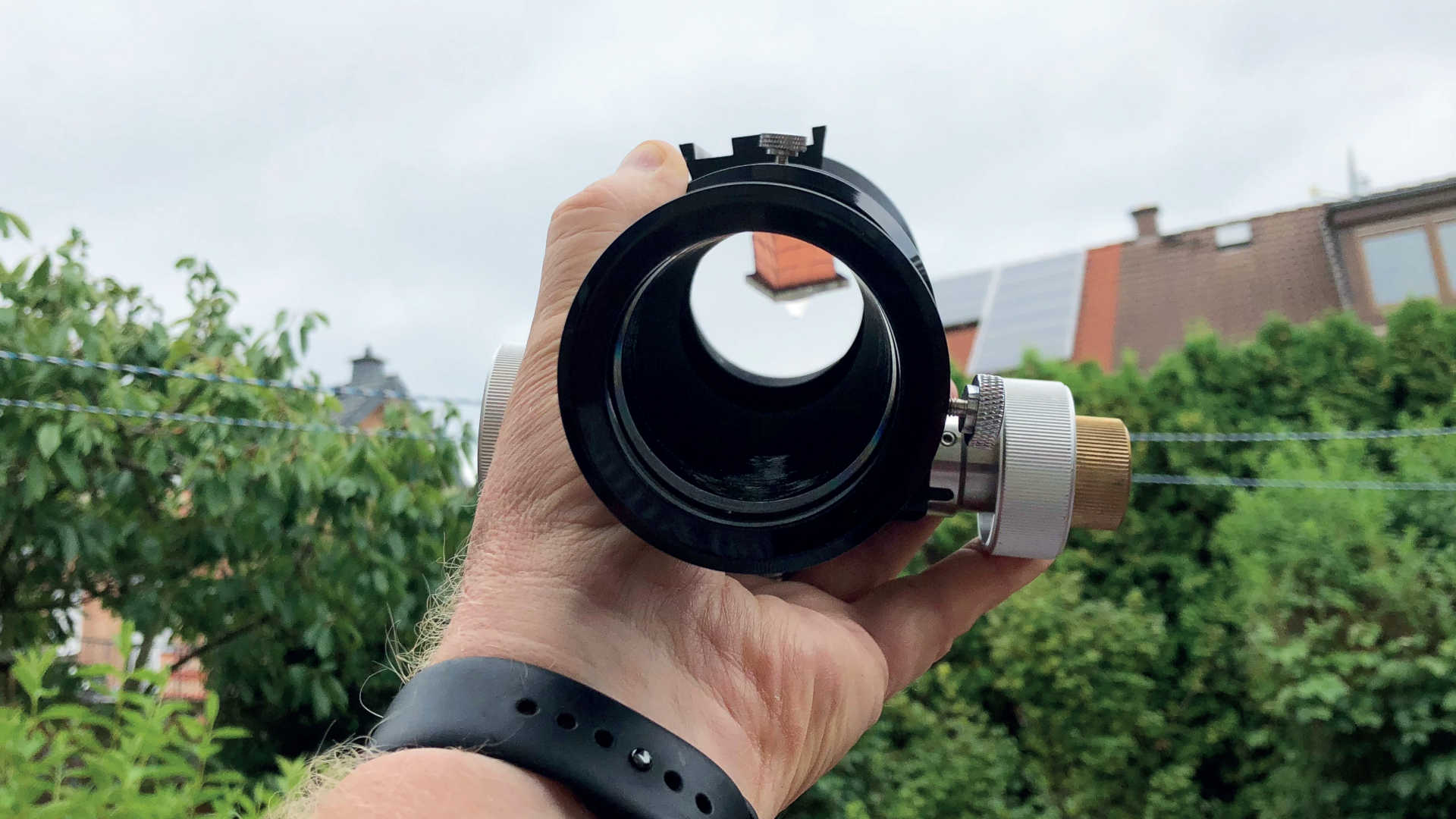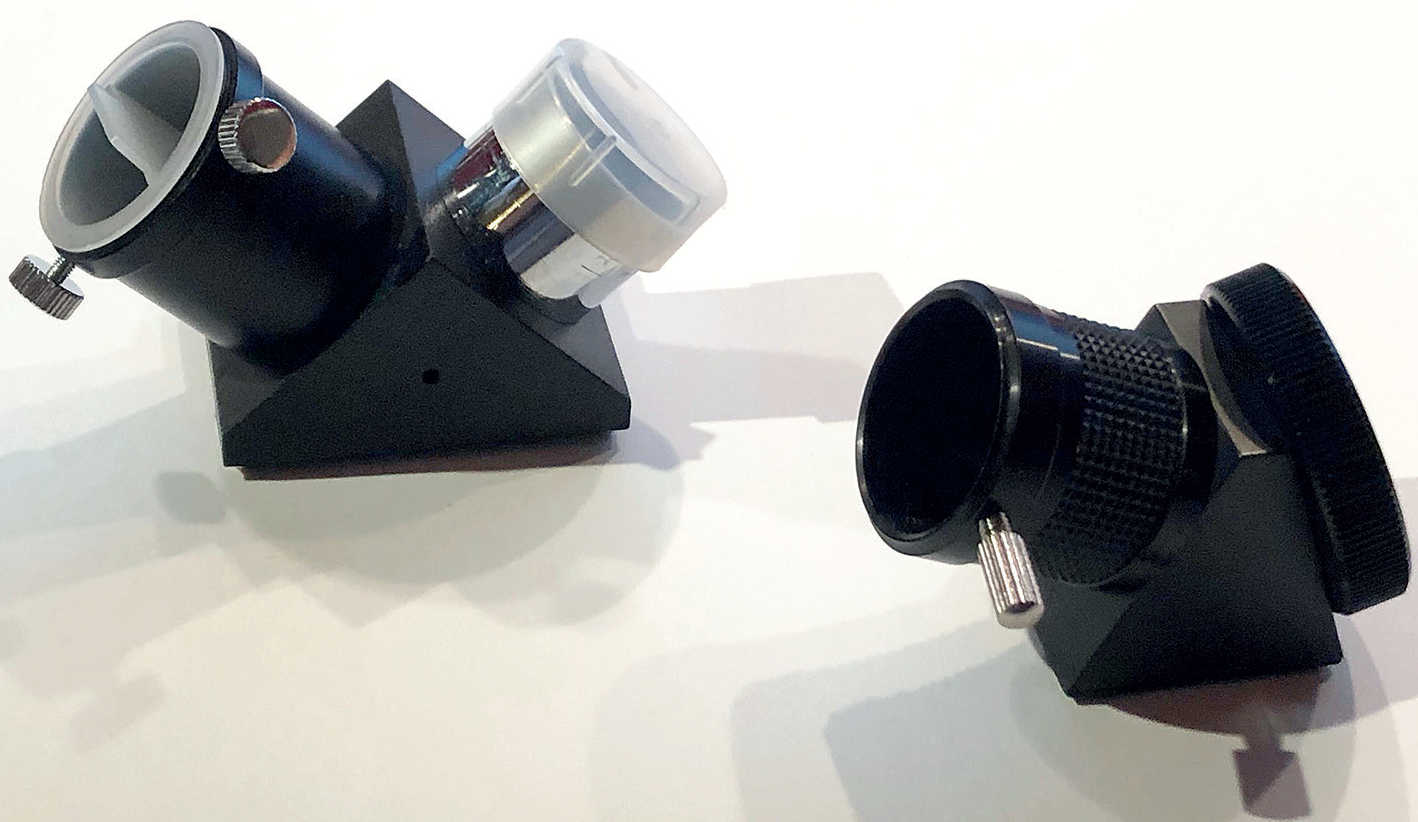Everything looks right?
Upright and non-reversed images through a telescope
Reversed, upside down, or both together - how would you prefer it? Fortunately, there is "right way round".
 The image created by an objective is reversed and upside down. This is unproblematic for many observations, but can sometimes be disturbing. P. Oden
The image created by an objective is reversed and upside down. This is unproblematic for many observations, but can sometimes be disturbing. P. OdenFor some observations, it is important that the image of the target object is neither reversed nor upside down. A prism alone is not enough to give you a correctly oriented image. But an Amici prism can help.
The effect is known to every telescope owner: the visual image through the telescope is reversed and upside down. This is due to the optical properties of the telescope, in which the objective (lens or mirror) produces an image of the object (which is reversed and upside down), which is then viewed using an eyepiece which acts as type of a magnifying glass.
Everything on its head
This effect is less disruptive, for example, when a cluster is observed with the telescope. On the other hand, it is really annoying if you want to reach an unfamiliar destination by star-hopping. If you move the telescope slightly to the left, the image in the eyepiece shifts to the right. If you are looking for a specific detail on a deep sky object or even the Moon, you always have to switch the image in your head, especially if you are using a lunar atlas or a similar aid. Of course, you can simply turn the lunar atlas upside down, but then unfortunately the text is also upside down, which equally annoying.
At this point, a frequently-used diagonal prism helps a little. Here, a mirror set at a 45° angle (or actually the reflective surface of a glass prism) lies in the beam path. The beam path is reflected by this mirror by a total of 90° upwards or sideways. This not only results in a much more comfortable observing position – especially for objects that are higher in the sky – but also in an upright image on the horizontal axis, although it is still reversed.
 An Amici prism next to a diagonal prism. P. Oden
An Amici prism next to a diagonal prism. P. OdenWith the upright image, you can orient yourself much better on the Moon or even for terrestrial observations. But we can do even better! Almost every telescope owner also has binoculars at home, here the image is upright and non-reversed. Two prisms are usually built into each side of the binoculars. On the one hand, they fold the beam path which allows the binoculars to be more compact in length and, thanks to their clever design, the first prism generates an upright albeit still reversed image on the other hand. The second prism then corrects the orientation of the image.
It is possible to obtain exactly the same effect with a telescope using two diagonal prisms arranged one behind the other. However, this would be a very unstable and unmanageable solution which would not work at all with many telescopes, because the optical path would be extended so much that you would not be able to focus at all.
An Amici prism to the rescue
 Side view of an Amici prism. The beam path switches the top and bottom of the image. The image would still be reversed without further manipulation. The special feature of the Amici prism: the lower surface is not flat, but take the form of a roof with two faces perpendicular to each other. P. Oden
Side view of an Amici prism. The beam path switches the top and bottom of the image. The image would still be reversed without further manipulation. The special feature of the Amici prism: the lower surface is not flat, but take the form of a roof with two faces perpendicular to each other. P. OdenThe use of a so-called Amici prism is a successful workaround. This is an accessory that at first glance looks a lot like a normal diagonal prism, but is a little more complex inside.
Amici prisms are available in two types, with 45° and 90° viewing angles, but both create a non-reversed, upright image for the observer. The operating principle is also the same for both. Similar to the diagonal prism, the entire beam is deflected by a total of 90° or 45°. The Amici prism trick is that the most important reflective surface is not flat, but is constructed like a roof with two faces at an angle to one another.
The entire light beam entering the Amici prism strikes these two faces and is split into two, each half is individually reflected twice on the two faces and then the two beams converge again to form a single and now mirrored beam which continues on its way. The end result is an upright and non-reversed image. In order for the subsequent convergence to work without any problems and for no distortion to occur in the image, the accuracy of the angle of the two surfaces to one other must be very high. Even if the mirror surfaces are not in focus, the tolerance for astronomical use should not exceed one to two arcseconds.
Complex beam path
 The left and right halves of the beam are reflected differently and then merged with the sides reversed. This means that the image is now not only upright, but also non-reversed. P. Oden
The left and right halves of the beam are reflected differently and then merged with the sides reversed. This means that the image is now not only upright, but also non-reversed. P. OdenIt is not so easy to graphically depict the path that a beam takes through an Amici prism in an understandable way. The difficulty lies in the fact that on the one hand the rays are reflected several times, and on the other hand the beam is split and the two halves are reflected differently.
The use of an Amici prism is great for visual use when observing the Moon or terrestrial objects, as the image looks exactly as you would expect. However, it is unnecessary for photographic use, because the image generated only needs to be rotated afterwards. The use would actually be counter-productive, because the two surfaces on which the beam enters and exits and the four surfaces on which it is reflected, cause noticeable losses in brightness and contrast, which we definitely want to avoid, especially in astrophotography.
A note to finish: the above largely applies to refractors, Schmidt-Cassegrains (SCs), Richie-Chretiens (RCs) and Maksutovs, but not for Newtonian telescopes, since these have a mirror (secondary mirror) already installed in the beam path to reverse the light beams.
Author: Peter Oden / licence: Oculum Verlag GmbH
